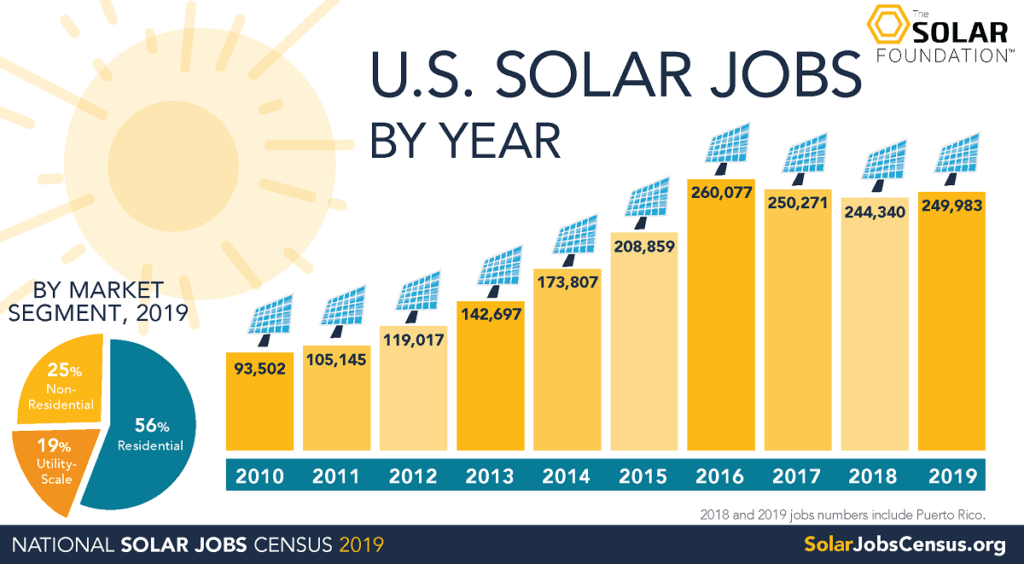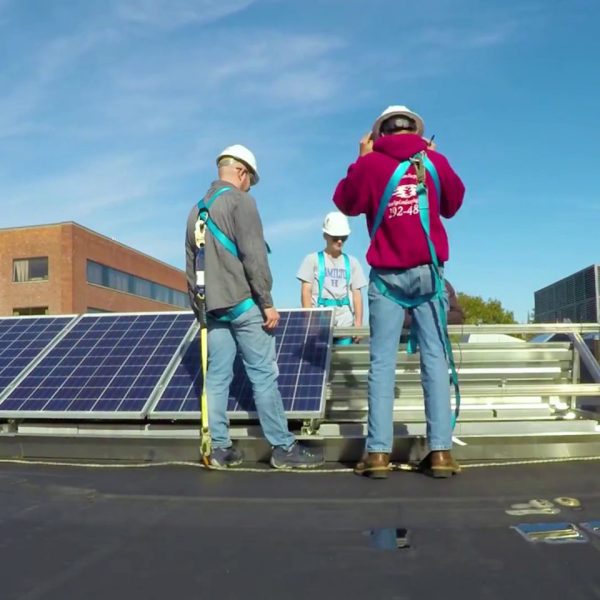“The United States has 249,983 solar workers, defined as those who spend 50% or more of their time on solar-related work. The solar workforce added more than 5,600 jobs nationwide from 2018 to 2019.” – National Solar Job Census (2019)
“In fact, wind-turbine technicians and solar-panel installers are the fastest-growing jobs in the country, according to the Bureau of Labor Statistics. The jobs are in such high demand, they are growing at a rate 12 times as fast as the rest of the US economy.” – Business Insider (August 2019)

Check out NYCP’s Green Jobs Map, and click here to jump to their webpage and visit the spreadsheet version of job opportunities! This map features jobs, trainings, internships and more in the clean energy, energy efficiency and clean transportation industries all across New York State. This is an ongoing project that you can contribute to if you know of a position that needs to be filled—add a point via this form.
It is a common misconception that ground mounted solar farms decrease nearby property values.

This map displays the solar projects that will be operational in the next few years. Expand the map to filter by the year.
1. Appearance: Large solar projects have similar characteristics to a greenhouse or single-story residence. Usually no more than 10 feet high, solar farms are often enclosed by fencing and/or landscaping to minimize visual impacts.
2. Noise: Solar projects are effectively silent. Tracking motors and inverters may produce an ambient hum that is not typically audible from outside the enclosure.
3. Odor: Solar projects do not produce any byproduct or odor.
4. Traffic: Solar projects do not attract high volumes of additional traffic as they do not require frequent maintenance after installation.
5. Hazardous Material: PV modules are constructed with the solar cells laminated into polymers and the minute amounts of heavy metals used in some panels cannot mix with water or vaporize into the air. Even in the case of module breakage, there is little to no risk of chemicals releasing into the environment.